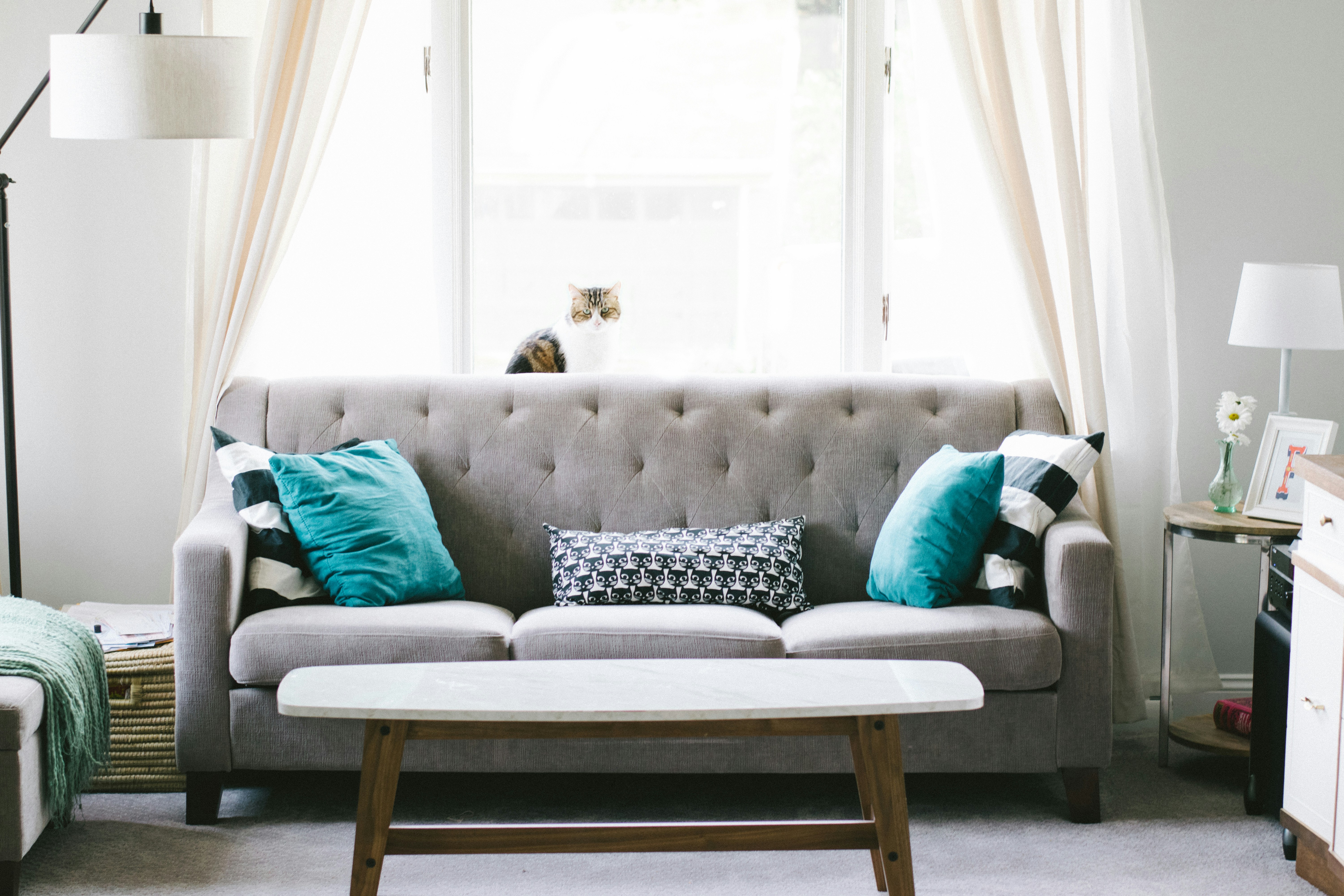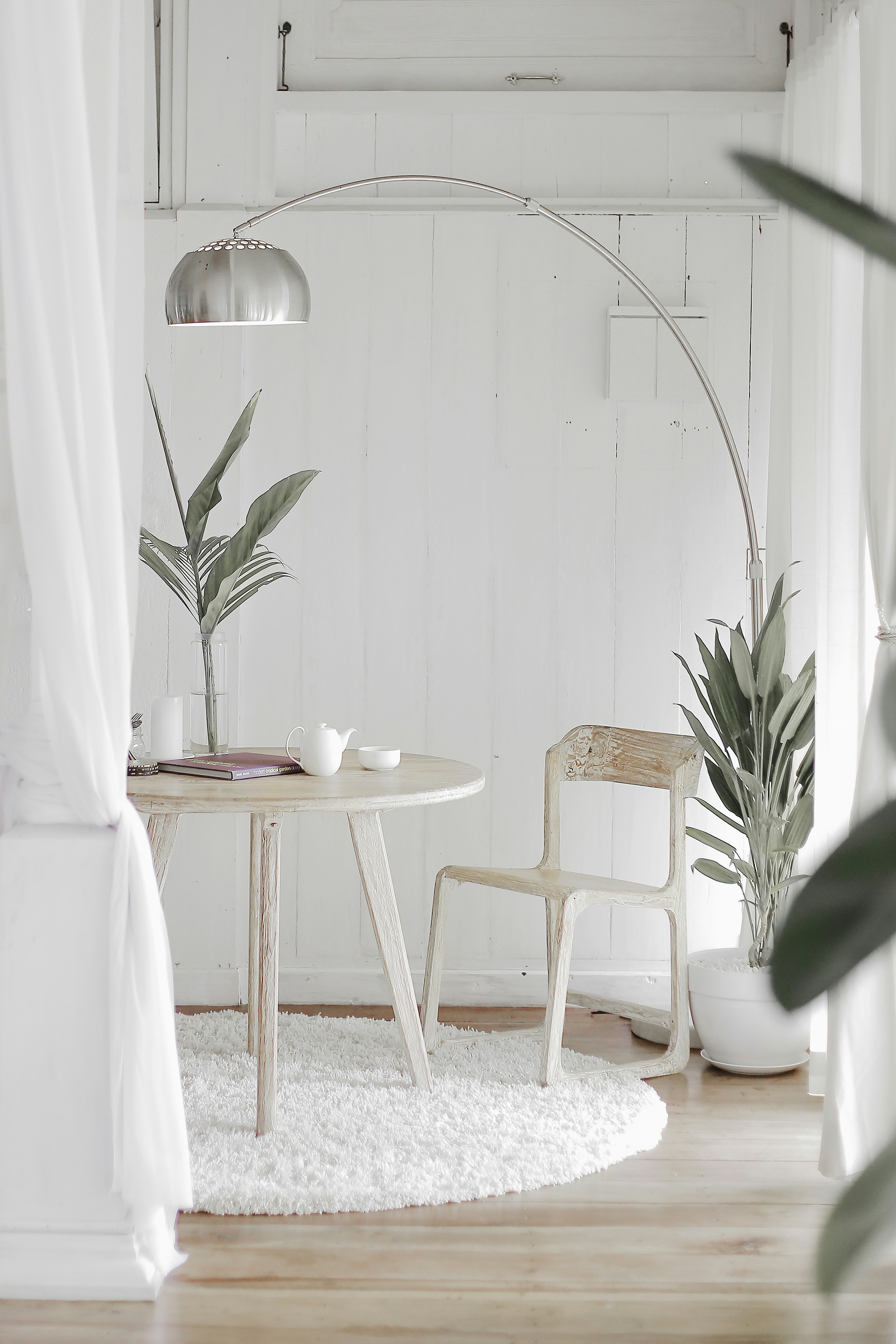Home Organization Guide: Creating Functional and Peaceful Spaces
Malik Mohsin Saleem Khan
November 18, 2023 · 15 min read

Introduction
In our increasingly busy lives, a well-organized home serves as more than just an aesthetic ideal—it functions as a foundation for mental clarity, reduced stress, and improved productivity. The connection between our physical spaces and mental wellbeing has been well-documented, with research consistently showing that cluttered environments can elevate stress hormones, impair focus, and even disrupt sleep patterns.
This comprehensive guide explores practical, sustainable approaches to home organization that go beyond trendy minimalism to create functional systems that work with your lifestyle rather than against it. Whether you're dealing with a small space, family chaos, or simply feeling overwhelmed by possessions accumulated over time, these evidence-based strategies will help you transform your living environment into a space that supports your wellbeing and reflects your priorities.
The Psychology of Space and Organization
Our relationship with our physical environment runs deeper than mere aesthetics or convenience. Environmental psychology research has established clear connections between our surroundings and our cognitive function, emotional state, and even physical health. Understanding these connections provides important context for approaching home organization as a wellbeing practice rather than simply a visual improvement.
Clutter's impact on cognitive function has been demonstrated in multiple studies, including research from Princeton University's Neuroscience Institute showing that visual clutter competes for neural representation, reducing the brain's processing capacity and ability to focus. This explains why even people who claim to function well in messy environments typically perform better on cognitive tasks in organized spaces. The brain continuously processes visual information from our surroundings, and each item in our visual field requires some degree of attention and categorization, even if we're not consciously aware of this process.
Beyond cognitive effects, disorganized spaces influence our emotional state and stress levels. A study published in Personality and Social Psychology Bulletin found that women who described their homes as cluttered or unfinished had higher levels of cortisol (the stress hormone) throughout the day compared to those who described their homes as restful and restorative. This chronic elevation of stress hormones can contribute to anxiety, depression, poor sleep, weight gain, and cognitive impairment over time.
Our approach to organization is also deeply personal, influenced by factors including our upbringing, personality traits, cognitive style, and current life circumstances. Some people naturally tend toward minimalism, while others feel more comfortable surrounded by meaningful objects. Some thrive with visible storage systems, while others prefer hidden organization. Recognizing these individual differences is crucial for developing sustainable organization systems rather than imposing one-size-fits-all solutions that may look appealing but ultimately fail to support your actual needs and preferences.
Foundations of Effective Home Organization
Successful home organization begins with foundational principles that address the underlying causes of disorder rather than merely treating symptoms. These principles create the framework for systems that remain functional over time rather than quickly reverting to chaos after initial organization efforts.
The essential first step involves clarifying your authentic priorities and needs rather than organizing around aspirational or socially-influenced ideals. Before purchasing storage solutions or discarding items, take time to observe how you actually use your space, what activities matter most to you, and what specific friction points consistently create frustration. This honest assessment often reveals that organization challenges stem not from lack of discipline but from systems that conflict with your natural behaviors and priorities.
"The goal of organization isn't to make your house look like a magazine. It's to create a space where you can find what you need when you need it, enjoy the activities that matter to you, and feel at peace rather than stressed by your surroundings." — Shira Gill, home organizing expert and author of "Minimalista"
The "one home for everything" principle addresses the common issue of items lacking designated storage locations. When possessions have no specific "home," they naturally accumulate on horizontal surfaces, creating visual clutter and making cleanup more cognitively demanding as each item requires a new decision about where it belongs. Establishing consistent, logical locations for all categories of items—ideally storing things near where they're used—creates automatic systems that require less ongoing mental effort to maintain.
Containment strategies prevent the natural spread of possessions that occurs without boundaries. Open shelving, while visually appealing in magazines, often leads to visual clutter and dust accumulation in real homes. Using appropriate containers—from drawer dividers to baskets to cabinet organizers—creates both physical and visual boundaries that make it easier to maintain order. These containers should be selected based on the specific items they'll hold rather than purchased arbitrarily for their aesthetic appeal alone.
Regular maintenance routines prevent the gradual accumulation of disorder that eventually requires major reorganization efforts. Small daily habits—like a 10-minute evening reset of common areas or processing mail immediately rather than creating paper piles—maintain organization with minimal effort compared to occasional marathon cleaning sessions. These routines are most sustainable when integrated into existing habits rather than requiring entirely new behaviors.
Mindful Decluttering: Beyond the Minimalist Ideal
Effective decluttering requires a nuanced approach that balances practical considerations with emotional attachments rather than forcing minimalist ideals that may not align with your values or lifestyle. This balanced perspective acknowledges that meaningful possessions can enhance wellbeing while excess clutter detracts from it.
The decision-making framework for keeping or releasing items should extend beyond the popular "does it spark joy" question to include multiple considerations: functionality (does it serve a practical purpose?), frequency (how often is it actually used?), duplication (do you have multiples serving the same function?), condition (is it in usable condition?), and emotional significance (does it hold genuine meaning beyond mere sentimentality?). This comprehensive assessment prevents both impulsive discarding of potentially useful items and unnecessary retention of truly unneeded possessions.
Category-based decluttering, popularized by organizing consultant Marie Kondo, offers significant advantages over room-by-room approaches. By gathering all items in a specific category (clothing, books, kitchen tools, etc.) in one location before making decisions, you gain accurate awareness of the total quantity, identify duplications, and can make more consistent decisions about what to keep. This approach also prevents the common problem of shuffling items between rooms rather than actually reducing overall volume.
- High-impact starting categories: Begin with less emotionally charged categories like expired consumables, broken items, obvious duplicates, and outdated paperwork to build momentum before tackling more difficult decisions
- Delayed decisions for sentimental items: Set aside highly emotional possessions for later consideration rather than beginning with these challenging categories
- Structured approach for paper: Implement a simple system of action items, reference materials, and archive-worthy documents, with immediate recycling of everything else
Ethical disposal of unwanted items addresses both environmental concerns and the emotional barrier many people face when discarding usable goods. Research appropriate local donation options for specific categories before beginning decluttering, and consider specialized programs for items like professional clothing, medical equipment, or craft supplies that benefit specific populations. For items with minimal donation value, investigate recycling options rather than defaulting to landfill disposal. This responsible approach often makes it easier psychologically to part with excess possessions.
Creating Sustainable Organization Systems
Sustainable organization systems work with your natural tendencies rather than requiring constant discipline to maintain. These thoughtfully designed systems reduce the cognitive load of staying organized by making the desired behavior the path of least resistance.
Zone-based organization arranges items according to activity patterns rather than conventional categories. Instead of organizing by item type (all books together, all electronics together), this approach creates functional zones based on how you actually use your space: a coffee station with everything needed for morning beverages, a bill-paying area with financial supplies and documents, or a craft zone with project materials and tools. This activity-centric organization reduces the friction of gathering necessary items for common tasks and makes it intuitive to return things to their proper locations.
Accessibility hierarchy places items based on usage frequency, with daily-use items in prime real estate (eye-level, easily reachable) and rarely-used items in less convenient storage. This principle applies within all storage spaces—from kitchen cabinets to closets to garage shelving—and significantly improves functional organization even without reducing the total number of possessions. The key implementation step involves honestly assessing actual usage patterns rather than theoretical or aspirational use.
Visual clarity through appropriate containment and labeling reduces the cognitive effort required to maintain organization. Clear containers for frequently accessed items provide visual cues to contents while maintaining order. Consistent, simple labeling—particularly for similar-looking containers or shared storage areas—eliminates the need to remember arbitrary storage locations. For households with children or multiple members, visual systems with pictures or color-coding often prove more sustainable than text-based organization.
Flexible systems that accommodate changing needs prevent organization breakdowns during life transitions. Building in some empty space rather than filling all storage to capacity allows for natural fluctuations in possessions. Modular storage components that can be reconfigured as needs change provide better long-term value than fixed, single-purpose organization solutions. This adaptability is particularly important in homes with growing children, evolving hobbies, or professional changes that introduce new categories of items.
Room-by-Room Organization Strategies
While organization principles remain consistent throughout the home, each area presents unique challenges and opportunities. These room-specific strategies address common pain points while applying the foundational concepts to different functional spaces.
- Entryway organization: Create a functional landing zone that prevents clutter migration with these key elements:
- Designated space for everyday items (keys, wallet, phone, bags) immediately inside the main entrance
- Closed storage for visual clarity, with separate compartments for each household member if possible
- Seasonal rotation system for outerwear and accessories to prevent overcrowding
- Mail processing station with recycling bin and action folder to prevent paper accumulation
- Kitchen functionality: Optimize this high-activity space by organizing around workflow rather than conventional categories:
- Store items at their point of use—coffee supplies near the coffee maker, cooking utensils near the stove, etc.
- Implement zones for specific activities: food prep, cooking, baking, food storage, cleaning
- Use drawer dividers and cabinet organizers to maintain order in deep spaces
- Consider frequency-based organization with daily-use items in prime locations
- Bedroom tranquility: Create a restful environment by minimizing visual stimulation and maximizing functional storage:
- Implement a regular closet review system with seasonal rotation for clothing
- Use under-bed storage for infrequently used items (with proper containment to prevent dust)
- Keep bedside areas minimally equipped with only regular-use items
- Consider hidden storage solutions that maintain visual calm while providing adequate capacity
- Bathroom efficiency: Manage this typically small but essential space with strategic containment:
- Group like items in waterproof containers that can be easily removed for cleaning
- Implement regular expiration date checks for medications and cosmetics
- Use vertical space with wall-mounted storage or over-door organizers in small bathrooms
- Create separate zones for different users or activities if the space is shared
- Home office productivity: Establish systems that support focus and efficiency:
- Create a comprehensive paper management system with action, reference, and archive categories
- Implement digital organization that mirrors physical systems for consistency
- Position frequently used items within arm's reach of primary work position
- Use vertical space for reference materials while keeping horizontal surfaces mostly clear
For each space, the implementation process should follow a consistent sequence: remove everything, clean thoroughly, sort items by category, decide what to keep based on the space's function, and replace items in logical zones with appropriate containment. This methodical approach prevents the common mistake of purchasing storage solutions before understanding exactly what needs to be stored and where.
Evolving Approaches to Home Organization
Home organization continues to evolve in response to changing lifestyles, environmental concerns, and technological developments. Understanding these emerging trends provides insight into sustainable approaches that align with contemporary values and challenges.
Multifunctional spaces have become increasingly important as remote work, online education, and home-based hobbies blur traditional room designations. Organization systems for these flexible spaces require adaptability, with furniture and storage that can transition between different functions throughout the day or week. Solutions like modular furniture, concealed workstations, and portable organization systems support this flexibility without creating visual chaos.
Digital-physical integration addresses the growing intersection between our physical possessions and digital lives. This includes both digitizing physical items (documents, photos, media) to reduce physical storage needs and creating organization systems for digital assets that mirror physical organization principles. As smart home technology becomes more prevalent, organization increasingly involves managing the relationship between connected devices, their physical components, and the spaces they control.
Sustainability considerations have shifted organization practices away from consumption-focused approaches that emphasize purchasing new storage products. Contemporary methods prioritize repurposing existing containers, selecting environmentally responsible storage solutions, and focusing on appropriate stewardship of possessions rather than continuous acquisition and disposal cycles. This sustainability mindset extends to maintenance practices, with natural cleaning products and repair-focused approaches replacing disposable organizing products.
Conclusion
Effective home organization transcends aesthetic trends to create environments that authentically support wellbeing, functionality, and personal values. By understanding the psychological impact of our spaces, implementing systems aligned with actual behaviors rather than idealized standards, and approaching organization as an ongoing practice rather than a one-time project, we can create homes that serve as foundations for the lives we want to live.
The most successful organization systems balance structure with flexibility, providing enough order to reduce cognitive load while remaining adaptable to changing circumstances and needs. This balanced approach recognizes that organization exists to serve people, not the reverse—the ultimate measure of success is not visual perfection but whether your space effectively supports your activities, reduces daily friction, and contributes to your sense of wellbeing.
Perhaps most importantly, home organization offers benefits that extend far beyond the practical advantages of finding items easily or maintaining a presentable space. A thoughtfully organized home can reduce stress, support healthy habits, facilitate meaningful activities, and even improve relationships by minimizing environment-based conflicts. By investing time in creating and maintaining organization systems aligned with your authentic needs and values, you're ultimately investing in your overall quality of life.
Frequently Asked Questions
How do I maintain organization when I have young children?
Create simple, child-accessible systems with picture labels for young non-readers. Implement regular 'reset routines' with the whole family rather than constant tidying. Use closed storage for items requiring adult supervision, and rotate toys rather than keeping all options available simultaneously. Most importantly, adjust expectations—a family home will never maintain show-house perfection, and attempting this creates unnecessary stress for everyone involved.
What's the best approach for organizing when you share space with others who have different standards?
Start by identifying shared values and pain points rather than focusing on aesthetic preferences. Establish designated personal zones where individual standards can prevail. For shared spaces, create simple systems that require minimal effort to maintain, focusing on functionality over perfection. Consider regular household meetings to address friction points before they create significant conflict, and be willing to compromise on non-essential aspects of organization.
How can I prevent organized spaces from becoming cluttered again?
Implement the 'one in, one out' rule for categories that tend to accumulate. Schedule regular maintenance sessions—even 15 minutes weekly per area prevents major disorder. Create designated 'holding zones' for items needing decisions rather than allowing them to accumulate on surfaces. Most importantly, ensure your organization systems align with your natural habits rather than requiring constant discipline to maintain.
Malik Mohsin Saleem Khan
Founder
Author bio information
Related Articles

Incorporating Mindfulness into Your Daily Routine
Mar 5, 2023 · 14 min read

Digital Detox Guide: Reclaiming Balance in a Hyperconnected World
Jun 25, 2023 · 15 min read

Sustainable Living Practices: Practical Steps Toward an Eco-Friendly Lifestyle
Nov 25, 2023 · 16 min read